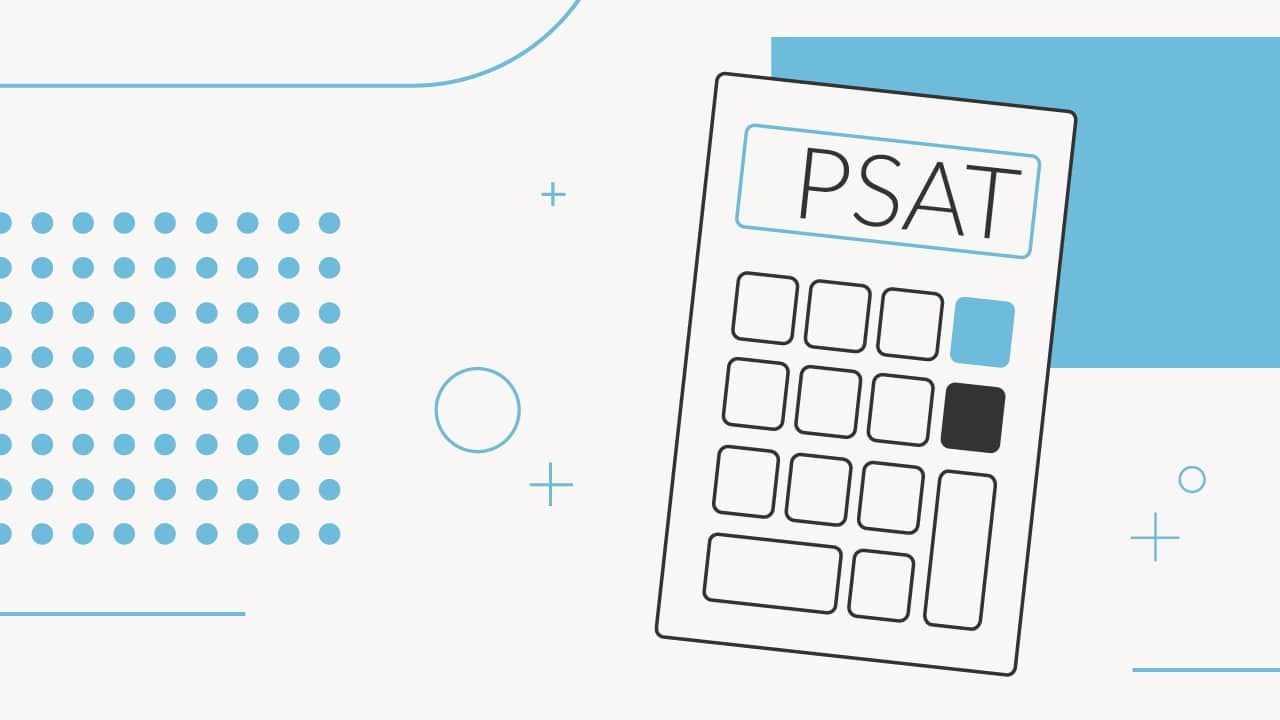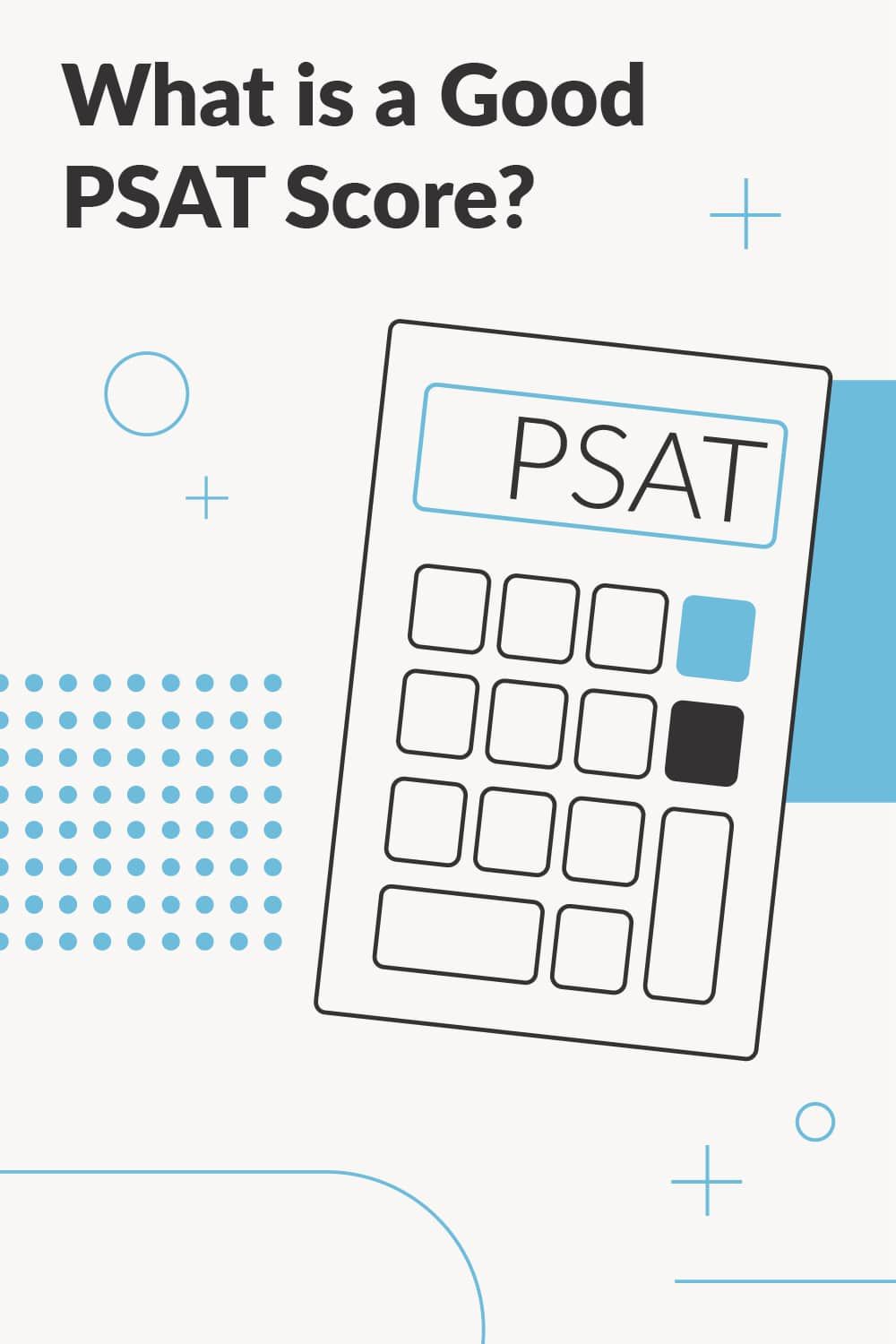
If you're an academically-minded high school student, it's important to know what constitutes a good Preliminary SAT (PSAT) score.
In this guide, we'll explain how the PSAT works and provide you with the information you need to be successful.
We'll cover the purpose of the PSAT, and show you how to interpret your score. We'll also discuss cross-test scores, subscore breakdowns, and explain the various percentiles.
In the end, you'll have a better understanding of how colleges view PSAT scores, and be equipped with the right strategies to excel on the PSAT.
Understanding The PSAT
The Preliminary SAT (PSAT) is a standardized test designed to help high school sophomores, and sometimes juniors, prepare for the SAT. It assesses students' reading, writing, and math skills while providing valuable practice experience for the actual exam. It also serves as a qualifying test for National Merit Scholarships.
Purpose Of Taking The PSAT
The PSAT offers several benefits beyond simply preparing you for the SAT. By participating, you can gain insight into your proficiency in various subject areas. You can use that knowledge to create an effective study plan for the SAT. A good PSAT score may also qualify you for scholarships or other academic recognition programs, such as the National Merit Scholarship Program.
Test Structure And Content
The PSAT consists of three main sections: Evidence-Based Reading & Writing (EBRW), Math Test - Calculator section, and Math Test - No Calculator section. The EBRW section includes two tests - a Reading Test with 47 questions and Writing & Language Test with 44 - scored on a scale from 160 to 760 points each.
- Evidence-Based Reading: This portion assesses comprehension skills through passages covering literature, history/social studies, science-related topics, and accompanying multiple-choice questions.
- Writing & Language: In this part of the EBRW section, grammar usage rules are evaluated by asking students to correct errors found within given texts or improve overall clarity through the revision suggestions provided.
- Math Test - Calculator: This section contains 31 questions that allow you to use a calculator and covers topics such as algebra, problem-solving, data analysis, geometry, and trigonometry.
- Math Test - No Calculator: You are required to answer 17 questions without access to a calculator. The section focuses on solving problems related primarily to arithmetic operations and some basic algebraic concepts.
The total score for the PSAT ranges from 320 to 1520 points. Unlike the SAT exam, no essay portion is included in the PSAT. It's primary goal is to help you familiarize yourself with the format and content of the SAT.
The PSAT can also qualify you for various scholarships depending on how you perform during these preliminary assessments. In other words, it represents a key step in formulating your college and career plans.
Key Takeaway: The PSAT is a standardized test designed to help high school sophomores and juniors prepare for the SAT while identifying their strengths and weaknesses. A good score may qualify students for scholarships or other academic recognition programs like the National Merit Scholarship Program. The test consists of three main sections: Evidence-Based Reading & Writing, Math Test - Calculator section, and Math Test - No Calculator section.
Interpreting Your PSAT Score Report
The PSAT score report gives vital insights into your test performance, including cross-test scores, sub-scores, and percentiles compared to other exam takers. This data helps you identify areas where you excel or need improvement before taking the SAT.
Cross-Test Scores Explained
Your PSAT score report includes two cross-test scores: Analysis in History/Social Studies and Analysis in Science. These scores are based on questions from all three test sections (Reading, Writing and Language, and Math), but focus specifically on your ability to analyze texts and solve problems related to history/social studies or science content. Each cross-test score ranges from 8 to 38.
Sub-scores Breakdown
In addition to cross-test scores, your PSAT score report also provides sub-scores for specific skill areas within each section of the exam:
- Reading Test: Command of Evidence & Words in Context
- Writing & Language Test: Expression of Ideas & Standard English Conventions
- Math Test: Heart of Algebra; Problem Solving/Data Analysis; Passport to Advanced Math
Note that all sub-scores range between 1 and 15 points.
Understanding Percentiles
Your percentile rank is critical to understanding how well you performed compared with others who took the same exam nationwide. For example, if your overall percentile rank is 75%, you scored higher than approximately 75% of students who took the PSAT during that testing year.
The College Board provides two types of percentiles in your score report: Nationally Representative Sample Percentile and User Percentile. The first compares you to all U.S. students in your grade, while the second compares you only to those who took the PSAT/NMSQT or PSAT 10.
By analyzing your PSAT score report, you'll know where you need to improve before taking the SAT exam. You can then build an effective study plan to target specific skills and content areas.
Key Takeaway: The PSAT score report provides important information about your performance on the test, including cross-test scores, sub-scores, and percentiles that compare you to other test-takers. By analyzing these scores and percentiles in your report, you can gain valuable insights into areas where you excel or need improvement before you take the SAT exam.
What Is Considered A Good PSAT Score?
A "good" PSAT score typically falls within or above the 75th percentile compared to other students who took the same exam nationwide. The College Board provides benchmarks in your score report to see how well you performed relative to others at your grade level.
Defining Good Scores By Percentile Rankings
Your PSAT score report includes a percentile ranking that shows how your performance compares to all other test-takers from that year. A higher percentile indicates better performance on the test. For example, if you scored in the 80th percentile, you outperformed four-fifths of other test-takers from that year.
- 50th Percentile: This is considered an average score as half of all test-takers perform better and half perform worse.
- 75th Percentile: Scoring in this range places you among the top 25% of test-takers and is generally considered a good PSAT score.
- 90th Percentile: Achieving a score in this range demonstrates exceptional performance on the exam and places you among the top 10% of students nationwide.
Comparing Scores With College Board Benchmarks
The College Board also provides benchmark scores for each section (Evidence-Based Reading & Writing and Math) based on grade-level expectations. These benchmarks let you know whether your scores align with college and career readiness levels. The benchmarks vary by grade level, with higher expectations for juniors than sophomores.
If your PSAT score meets or exceeds the benchmark in a particular section, it means you have a strong foundation and are likely prepared for college-level coursework. If your score is below the benchmark, you may require extra preparation before taking on SATs or college.
Remember that while achieving a good PSAT score can boost your confidence and provide valuable insight, it's important not to place too much emphasis on a single test result. Your overall academic performance, extracurricular activities, and personal growth throughout high school will all contribute to your future success in college admissions processes.
Key Takeaway: To achieve a good PSAT score, you should aim to perform better than 75% of other test-takers. The College Board provides benchmark scores for each section to help understand if you're on track for college and career readiness. However, it's important not to over-emphasize this single test result, as your overall academic performance and personal growth will contribute significantly to your future success in the college admissions process.
Importance Of National Merit Scholarships Qualification
The National Merit Scholarship Program is a prestigious academic competition recognizing and rewarding high school students who excel in the PSAT. To qualify for the National Merit Scholarship Program, a student must achieve an PSAT score in the top 1% of all nationwide juniors who participate in this competition.
National Merit Scholarship Requirements
To be eligible for consideration as a National Merit semifinalist, you must meet specific criteria set by the College Board. These include:
- Taking the PSAT/NMSQT during your junior year of high school.
- Achieving an outstanding score on both your sophomore and junior-year tests.
- Being enrolled as a full-time student progressing towards graduation from high school.
- Demonstrating strong academic performance throughout your entire high school career.
If you meet the criteria, you could be among the 16K semifinalists chosen each year based on their test scores. Semifinalists then can submit additional materials, such as essays and letters of recommendation, to compete for finalist status and earn scholarships worth up to $2,500 per year. Remember, if you can earn money through scholarships, you won't have to make as much money during college.
Benefits Of Being A Semifinalist/Finalist
Becoming a National Merit semifinalist or finalist offers several advantages beyond potential financial assistance through scholarships:
- Prestige: It demonstrates your academic prowess and sets you apart from other students in the eyes of college admissions officers.
- College Scholarships: Many colleges offer additional scholarships to National Merit finalists, which can help reduce the overall cost of attendance. Some schools even provide full-tuition awards for these high-achieving students.
- Career Opportunities: It can open doors to internships, research opportunities, and job offers after graduation due to its prestigious reputation among employers.
Key Takeaway: Achieving a top PSAT score that qualifies you as a National Merit semifinalist or finalist increases your chances of receiving financial assistance and enhances your overall academic profile and future career prospects.
To qualify for the scholarship, students must meet specific criteria the College Board sets and demonstrate strong academic performance throughout their high school career. Becoming a National Merit scholar offers several advantages beyond potential financial assistance through scholarships, including prestige, college scholarships, and career opportunities.
How Colleges View Your PSAT Scores
The PSAT can influence your college admissions prospects. While colleges do not directly consider your specific PSAT scores during the admissions process, they can still impact your academic future.
PSAT Scores And College Admissions
It's essential to understand that colleges do not receive or review individual students' PSAT scores. High schools and colleges look at how you did in courses, out-of-class activities, letters of reference, personal statements, and SAT/ACT results when making admissions decisions. However, if you qualify as a National Merit semifinalist based on your junior-year PSAT score - which places you among the top 1% of all juniors nationwide - it can be an impressive addition to your application.
Use Of Aggregate Data By Colleges
Although colleges don't evaluate individual students' performances on the PSAT when making admission decisions, they may use aggregate data from all test-takers to identify trends and patterns among applicants with similar achievements.
This information helps institutions better understand their applicant pool and predict enrollment rates more accurately. Some schools might also use this data to send targeted marketing materials promoting their programs or scholarships to prospective students who demonstrate strong academic potential through collective performance.
How to make the most of your PSAT:
- Focus on your SAT or ACT scores: Since colleges prioritize these standardized test results, investing time and effort into preparing for them is crucial. Consider using the insights gained from your PSAT score report to identify areas where you need improvement and develop a targeted study plan.
- Aim for National Merit recognition: Strive to achieve a high enough junior-year PSAT score that qualifies you as a National Merit semifinalist. This distinction can be an excellent addition to your college application and may even result in scholarship opportunities.
- Maintain strong academic performance: Remember that colleges evaluate more than just test scores when making admissions decisions. Maintain a balance between academic and extracurricular activities, such as joining clubs or organizations in school to seek out leadership roles.
Key Takeaway: Colleges do not review individual PSAT scores, but they may use aggregate data to identify trends among applicants. Students should focus on their SAT or ACT scores and aim for National Merit recognition while maintaining strong academic performance.
Strategies For Improving Your PSAT Score
If you've taken the PSAT and want to improve your chances on the SAT, it's best to focus on the problem areas from your PSAT. Make use of practice exams, tutoring services, or online courses tailored towards boosting performance in the weaker sections you've identified.
Identifying Areas For Improvement
To begin with, review your PSAT score report and identify any specific areas where you scored lower than desired. Remember that improving in just one area can significantly impact your overall score.
- Analyze cross-test scores and subscores to pinpoint weaknesses within each section (reading, writing/language, math).
- Review question-level feedback from the College Board to understand which questions were most challenging for you.
- Based on this analysis, create a list of topics or skills requiring additional practice.
Test Prep Resources and Strategies
Incorporate various test preparation resources into your study routine:
- SAT Practice Tests: The College Board offers free official SAT practice tests that simulate actual exam conditions. These are valuable tools for assessing progress and familiarizing yourself with the real test format. You can access them at their website: Khan Academy's Official SAT Practice Tests page.
- Tutoring Services: If you need personalized assistance, consider working with a tutor specializing in SAT preparation. They can help identify your strengths and weaknesses, provide tailored instruction, and offer guidance on test-taking strategies. Find reputable tutors through online platforms like Wyzant or local tutoring centers.
- Online Courses: Enroll in an online course designed for SAT prep to access structured lessons, practice materials, and expert advice from experienced instructors. Some popular options include The Princeton Review, Magoosh, and Khan Academy's free resources.
- Schedule Regular Study Sessions: Consistency is vital when preparing for standardized tests like the PSAT or SAT. Set aside time each week to review material, complete practice questions, and track progress toward your goals.
Incorporating these strategies into your study plan will increase the likelihood of improving your PSAT score and prepare you for success on the SAT exam.
Key Takeaway: To achieve a higher score on the SAT, it's important to develop an effective study plan targeting areas for improvement identified from your PSAT score report. Utilize test prep resources like practice exams, tutoring services or online courses and schedule regular study sessions to track progress towards your goals. Remember that improving in just one area can significantly impact your overall score.
Good PSAT Score FAQs
What is considered a good PSAT score?
A good PSAT score typically falls within the 75th percentile or higher It means that you performed better than 75% of test-takers and demonstrated strong academic potential.
Is a 1450 PSAT score good?
A 1450 PSAT score is considered excellent as it places you in the top percentile range (99th), indicating exceptional performance on the test. With a score this high, you may qualify for National Merit Scholarships and have increased chances of admission to more exclusive colleges.
Is 750 a good PSAT score?
A 750 PSAT score is below average, falling around the lower end of percentiles (25-30). While not necessarily "good," it's important to identify areas for improvement and utilize resources like test prep materials, study groups, or tutoring services to increase future scores.
Is 1060 a good PSAT score for a sophomore?
A 1060 PSAT score is considered average for a sophomore since it is at the 50th percentile of all test takers. While this is a solid starting point, you should focus on improving your score through practice and studying before taking the SAT in your junior or senior year. Utilize Khan Academy's SAT Prep to boost your performance in areas where you struggle.
Final Thoughts
In conclusion, the PSAT is an important test that can help students prepare for the SAT and qualify for the National Merit Scholarship Program. Understanding how to interpret your score report and identify areas for improvement can lead to better PSAT scores, setting you up for future success.
If you want more information on personal finance topics, check out our many articles on student loans and investing. With the right resources and strategies, you can control your finances today!

Robert Farrington is America’s Millennial Money Expert® and America’s Student Loan Debt Expert™, and the founder of The College Investor, a personal finance site dedicated to helping millennials escape student loan debt to start investing and building wealth for the future. You can learn more about him on the About Page or on his personal site RobertFarrington.com.
He regularly writes about investing, student loan debt, and general personal finance topics geared toward anyone wanting to earn more, get out of debt, and start building wealth for the future.
He has been quoted in major publications, including the New York Times, Wall Street Journal, Washington Post, ABC, NBC, Today, and more. He is also a regular contributor to Forbes.
Editor: Colin Graves Reviewed by: Chris Muller
